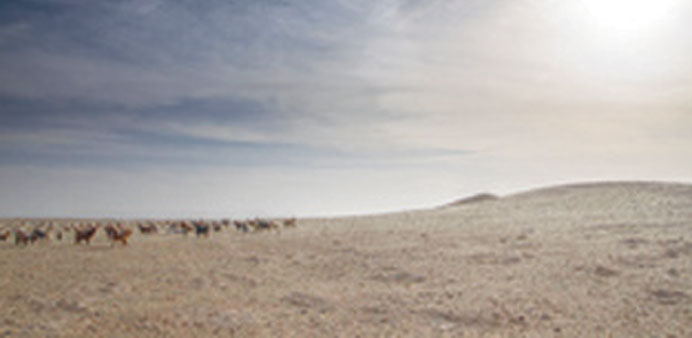
Low cloud cover conditions and abundant free land space in Qatar offer a great potential for solar power plants.
With every square kilometre of land in Qatar receiving solar energy equivalent to 1.5mn barrels of crude oil in a year, Qatar is geographically well positioned to exploit significant solar energy, hence should consider setting up concentrated solar power (CSP) plants, according to top officials of Qatar Petroleum (QP).
“With an average daily sunshine time exceeding 9.5 hours, low cloud cover conditions and abundant free land space offer a great potential for construction of large-scale solar power plants,” stated a technical paper jointly presented by Ali Hamed al-Mulla and Pitta Govinda Rao of QP at the second Qatar Japan Environment symposium.
Qatar has solar irradiation levels with studies showing an annual rate of 1,858 kWh (kilowatt hour) per square metre/year, they said, adding though considerable seasonal variations exist between summer and winter months, large potential is available throughout the year. During the summer months of May to July, the potential is over 6 kWh per square metre per day, whereas during the winter months (December to February), it is about 3.5 to 4.4 kWh per square metre per day, the paper said, highlighting that the solar radiation data at Doha International Airport clearly demonstrate the availability of large potential for utilising solar
energy in Qatar.
Suggesting the need for CSP, they said Qatar’s capability for producing electricity from CSP is “huge” as the incident solar radiation is higher than the threshold value.
However, land area requirements and maintenance cost for CSP is higher than the photo-voltaic (PV) panel techniques, al-Mulla and Rao said, adding on an average, four acres of land is required for producing 1MW (megawatt) of power through PV technology.
A United Nations Environment Programme study revealed that a minimum threshold value of 1,800 kWh per sq m per year of direct normal irradiance (DNI) is a prerequisite for CSP installations. Furthermore, it also found that places with DNI values of 2,000 kWh per sq m per year were found to be economically most feasible.
“DNI value of Qatar is about 2,008 kWh per sq m per year which clearly demonstrates the suitability for CSPs in Qatar. With global horizontal irradiance of 2,140 kWh per sq m per year, Qatar is also best suited for solar PV systems,” they said.
Despite the cost of PV electricity is 2.25 times to that of gas based electric power, Qatar is investing large amounts of money due to existence of large potential and social responsibility of meeting its sustainable development goals set under Qatar
National Vision 2030.
Qatar Solar Technologies (QSTec) is building a brand new industry of solar energy in Qatar. QSTec, a joint venture between Qatar Foundation (70%), Solar World AG (29%) and Qatar Development Bank (1%) is building a poly silicon production plant in Ras Laffan Industrial City.
It is being built on a 1.2mn sq km land with $1bn cost, estimated to produce 8,000 metric tonnes per year (MTPY) of poly silicon with a design to expand its capacity. Eventually, more than 45,000 MTPY of poly silicon can be produced with the plant being designed seamlessly incorporate ingots, wafers, cells and modules.


